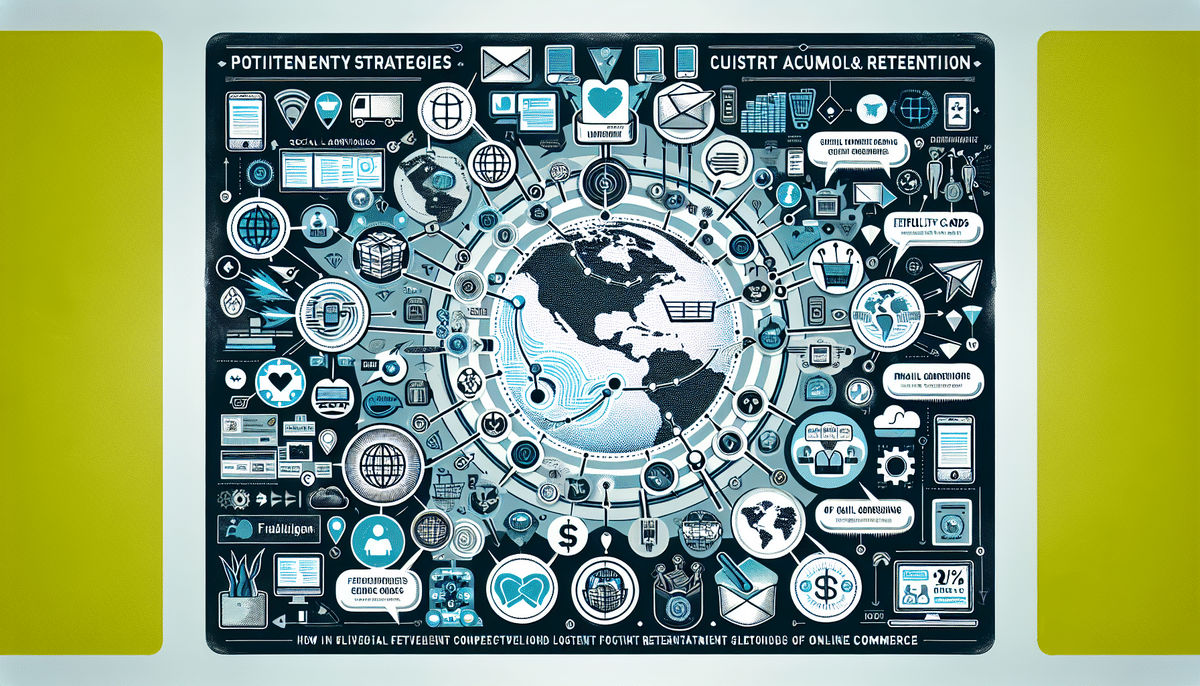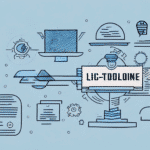Overcoming E-Commerce Challenges: Strategies for Customer Acquisition and Retention
The world of e-commerce is constantly evolving, and as online retailers strive to adapt to the ever-changing landscape, they face a host of challenges. In this article, we delve into some of the most common obstacles encountered by e-commerce businesses and explore effective strategies to acquire and retain customers for sustainable growth.
Understanding the Current E-Commerce Landscape
E-Commerce Growth Statistics
The e-commerce industry has witnessed explosive growth over the past decade. With the advent of new technologies and an increase in internet penetration, online shopping has become a way of life for consumers worldwide. According to Statista, global e-commerce sales are projected to reach nearly $7.4 trillion by 2025.
Impact of Mobile Devices
One of the key drivers of e-commerce growth is the rise of mobile devices. With the increasing popularity of smartphones and tablets, consumers can now shop online from anywhere, at any time. This has led to a significant shift in consumer behavior, with many people now preferring to shop online rather than in physical stores. In fact, mobile commerce (m-commerce) is expected to account for 73% of total e-commerce sales by 2022, as reported by eMarketer.
Role of Social Media Platforms
Another important trend in the e-commerce industry is the rise of social media. Platforms like Facebook, Instagram, and Pinterest are now being used by businesses to promote their products and connect with customers. Social media has also made it easier for consumers to discover new products and make purchases directly from their favorite brands. According to a report by Business Insider, social commerce sales in the U.S. are expected to reach $36.62 billion by 2024.
Common Challenges Faced by Online Retailers
While the potential for growth in the e-commerce sector is vast, it’s not without its challenges. Some of the biggest hurdles include:
- Fierce competition in the industry
- Rising customer acquisition costs
- Cart abandonment
- The need to provide personalized experiences that meet the demands of today’s savvy online shoppers
Another challenge faced by online retailers is the issue of fraud and security. With the increasing number of online transactions, the risk of fraudulent activities also rises. Retailers need to ensure that their payment systems are secure and that they have measures in place to prevent fraud. This can be a costly and time-consuming process, but it is essential to protect both the business and its customers.
Additionally, online retailers need to keep up with the constantly evolving technology and trends in the industry. This means investing in new software, tools, and platforms to improve the customer experience and stay ahead of the competition. It also requires staying up-to-date with changes in search engine algorithms and social media algorithms to ensure that the business is visible and accessible to potential customers.
Importance of Customer Acquisition and Retention
When it comes to e-commerce success, customer acquisition and retention are key. Acquiring new customers is essential for growth, but it can also be an expensive and time-consuming process. Retaining existing customers can be equally, if not more important, as loyal customers can act as brand advocates, drive repeat purchases, and generate more revenue over time.
Strategies for Customer Acquisition
One way to acquire new customers is through targeted advertising. By identifying your ideal customer and tailoring your ads to their interests and behaviors, you can increase the likelihood of converting them into a customer. According to Digital Commerce 360, optimizing ad spend can significantly reduce customer acquisition costs.
Another effective strategy is to offer incentives for referrals. By rewarding current customers for referring their friends and family, you can expand your customer base while also building loyalty among your existing customers.
Strategies for Customer Retention
When it comes to retaining customers, providing excellent customer service is crucial. Responding promptly to inquiries and complaints, offering personalized recommendations, and providing a seamless checkout experience can all contribute to a positive customer experience. Additionally, offering loyalty programs or exclusive discounts to repeat customers can incentivize them to continue shopping with your brand.
Building a Customer-Centric E-Commerce Strategy
A customer-centric e-commerce strategy is crucial to acquiring and retaining customers. Businesses need to focus on providing a seamless shopping experience that addresses the customers’ needs, preferences, and pain points. This can be achieved through various approaches, such as improving website usability, offering personalized recommendations, and providing exceptional customer service.
Leveraging Customer Data
One effective way to build a customer-centric e-commerce strategy is by leveraging customer data. By analyzing customer behavior and preferences, businesses can gain valuable insights into what their customers want and need. This information can then be used to tailor the shopping experience to each individual customer, providing them with personalized recommendations and offers that are relevant to their interests. Additionally, businesses can use customer data to identify pain points in the shopping experience and address them proactively, improving overall customer satisfaction and loyalty.
Leveraging Social Media for Customer Acquisition
Social media can be a powerful tool for e-commerce customer acquisition. By building a strong presence on platforms such as Facebook, Instagram, and Twitter, retailers can reach new audiences, engage with customers, and promote their products in authentic and meaningful ways.
Effective Social Media Strategies
However, it's important to note that simply having a presence on social media is not enough. Retailers must also invest in targeted advertising and influencer partnerships to maximize their reach and impact. Additionally, regularly analyzing and adjusting social media strategies based on performance metrics is crucial for continued success in customer acquisition through these channels.
Creating a Compelling Brand Story
A compelling brand story can help e-commerce businesses differentiate themselves from the competition and resonate with customers on a deeper level. By focusing on brand values, mission, and vision, retailers can build an emotional connection with consumers and establish themselves as a trusted and relatable brand.
Elements of a Strong Brand Story
One way to create a compelling brand story is to incorporate the founder's personal journey and experiences into the narrative. Sharing the challenges and triumphs that led to the creation of the business can help customers connect with the brand on a more personal level. Additionally, highlighting the unique aspects of the brand, such as sustainable practices or a commitment to social responsibility, can further differentiate the business from competitors and attract customers who share similar values.
Optimizing Your Website for Conversion
A well-optimized website can mean the difference between a successful e-commerce business and a struggling one. By focusing on elements such as page speed, mobile responsiveness, and user interface design, retailers can create a smooth and efficient user experience that encourages conversions and maximizes revenue.
Improving Website Usability
One important aspect of optimizing your website for conversion is to ensure that your product pages are well-organized and easy to navigate. This means providing clear and concise product descriptions, high-quality images, and user-friendly navigation menus. By making it easy for customers to find what they are looking for, you can increase the likelihood of them making a purchase.
Analyzing Performance Metrics
Another key factor in website optimization is to regularly analyze and track your website's performance metrics. This includes monitoring your website's traffic, bounce rate, and conversion rate. By identifying areas of your website that may be underperforming, you can make targeted improvements to increase your conversion rates and ultimately drive more revenue for your business. Tools like Google Analytics can provide valuable insights into user behavior and website performance.
Utilizing Email Marketing for Customer Retention
Email marketing is a powerful tool for e-commerce businesses looking to retain customers. By sending personalized, targeted messages to existing customers, retailers can encourage repeat purchases, strengthen brand loyalty, and generate more revenue over time.
Segmenting Your Audience
One of the key benefits of email marketing for customer retention is the ability to segment your audience. By dividing your customer base into different groups based on their purchase history, interests, or demographics, you can tailor your messages to their specific needs and preferences. This not only increases the relevance of your emails but also improves the chances of customers engaging with your content and making a purchase.
Automation and Personalization
In addition to segmentation, email marketing also allows for automation and personalization. With the help of email marketing software, you can set up automated campaigns that trigger based on specific actions or events, such as a customer's birthday or a recent purchase. By personalizing your messages with the customer's name, past purchase history, or other relevant information, you can create a more personalized and engaging experience that strengthens the customer's connection to your brand.
Crafting Personalized Experiences for Customers
Personalized experiences can help e-commerce businesses stand out and create a loyal customer base. By leveraging customer data, businesses can provide tailored recommendations, offers, and promotions that feel unique and relevant to each individual customer.
Moreover, personalized experiences can also improve customer satisfaction and increase sales. When customers feel understood and valued, they are more likely to return to a business and make repeat purchases. In fact, studies have shown that personalized experiences can lead to a 20% increase in sales for e-commerce businesses.
Implementing Loyalty Programs to Increase Retention
Loyalty programs are an effective way to increase customer retention in e-commerce. By rewarding loyal customers with exclusive perks, such as discounts, free shipping, and VIP access, retailers can incentivize repeat purchases and foster long-term loyalty.
Benefits of Loyalty Programs
One of the key benefits of loyalty programs is that they provide valuable data on customer behavior and preferences. Retailers can use this data to personalize their marketing efforts and tailor their product offerings to better meet the needs of their customers. This can lead to increased customer satisfaction and loyalty, as customers feel that their needs are being met in a more personalized way.
Another advantage of loyalty programs is that they can help to differentiate a retailer from its competitors. In a crowded e-commerce market, offering a unique and compelling loyalty program can be a powerful way to stand out and attract new customers. By creating a program that is tailored to the needs and preferences of their target audience, retailers can create a competitive advantage that sets them apart from other players in the market.
Measuring Success and Refining Your Strategy
Measuring success and refining strategies are critical components of successful e-commerce businesses. By monitoring key metrics such as customer acquisition costs, conversion rates, and customer lifetime value, retailers can identify areas of improvement and make data-driven decisions to optimize their overall strategy.
Key Performance Indicators (KPIs)
- Customer Acquisition Cost (CAC): The cost associated with acquiring a new customer.
- Conversion Rate: The percentage of visitors who make a purchase.
- Customer Lifetime Value (CLV): The total revenue a business can expect from a single customer account.
Regularly reviewing these KPIs can help businesses understand their performance and make necessary adjustments to enhance growth and profitability.
Staying Ahead of the Competition in the E-Commerce Space
In the fast-paced world of e-commerce, staying ahead of the competition is crucial. Retailers need to keep an eye on emerging trends, technologies, and consumer behaviors to remain relevant and competitive. By continuously innovating and experimenting with new approaches, businesses can find new opportunities for growth and success.
Embracing Emerging Technologies
Technologies such as artificial intelligence, machine learning, and augmented reality can provide significant advantages. For example, AI can be used to personalize shopping experiences, while AR can allow customers to visualize products in their own environment before making a purchase.
The Future of E-Commerce and Its Impact on Customer Acquisition and Retention
The future of e-commerce is bright, with new technologies, such as augmented reality, virtual reality, and artificial intelligence, offering exciting possibilities for retailers and consumers alike. As the industry continues to evolve, businesses need to stay tuned to new opportunities and adapt to changes in customer behaviors and expectations.
In conclusion, e-commerce customer acquisition and retention are essential for long-term growth and success. By building a customer-centric strategy and leveraging various channels and tactics, retailers can overcome the challenges of the industry and position themselves for sustained growth and profitability.




















